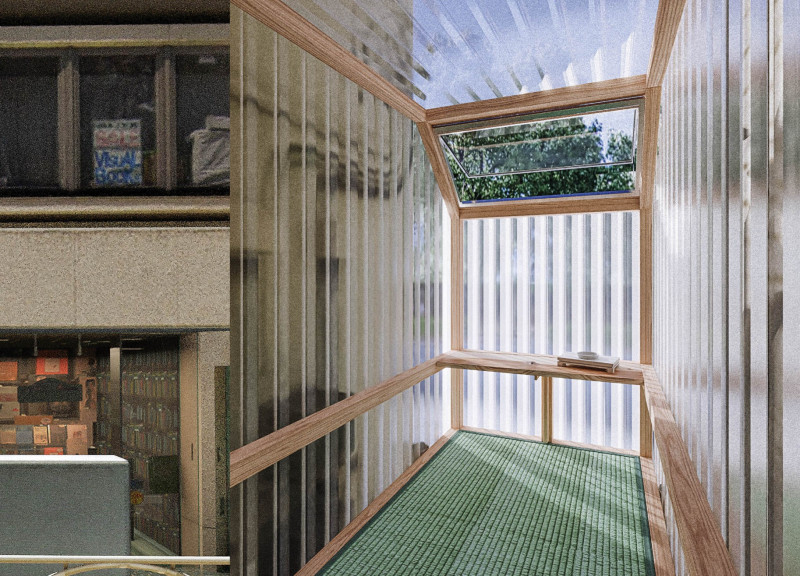5 key facts about this project
Ichijo is located in the gap between two buildings in Bunkyo City Ward, Tokyo. The design uses this overlooked space to create a small retreat focused on meditation and quiet reflection. It takes advantage of the city’s dense environment, offering a sanctuary for those seeking a break from the fast pace of urban life. The concept invites individuals to immerse themselves in an experience of peace and introspection.
Design Concept
The cabin has a compact footprint of two square meters and is elevated two meters above street level. This height provides privacy and a different view of the surrounding area. The structure is intended to support various meditative activities, making it a practical space for individuals to escape the everyday noise of the city.
Materials and Construction
Japanese cedar wood forms the frame of the cabin, sourced sustainably to reflect environmental awareness. This choice not only supports local resources but also adds a natural quality to the design. The exterior is covered with opaque polycarbonate cladding, which reduces outside visual distractions while allowing natural light to enter. This combination creates a warm and inviting space for users.
Interior Space Use
Inside the cabin, the space is designed around a single tatami mat. This provides just enough room for one person to lie down comfortably. The straightforward design focuses on simplicity, ensuring that every aspect contributes to its purpose. It allows occupants to disconnect from the outside world and engage in a moment of quiet reflection.
Assembly and Adaptability
A significant feature of the cabin is its modular construction. It can be easily assembled and disassembled without the use of glue. This method of construction promotes sustainability and allows for future adjustments to its location or configuration. The design reflects a practical response to the changing needs of urban living.
Light filters through the polycarbonate cladding, creating soft shadows that lend a tranquil quality to the interior, enhancing the cabin's role as a space for relaxation.



















































